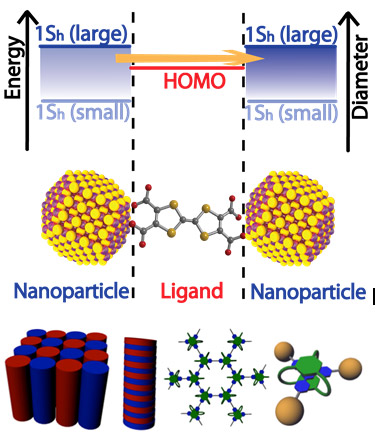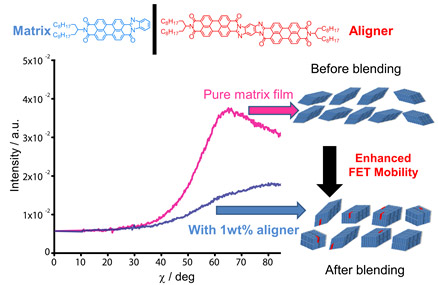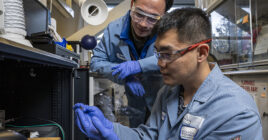
Facility Director, Organic and Macromolecular Synthesis
510.486.6287
Biography
Education
Dr. Liu’s research aims to achieve coherent control of functionality and properties across different scales through molecular level design and synthesis. With the developed materials chemistry, Dr. Liu has not only established an organic version of a comprehensive set of nanostructures, but also offered a knowledge base in guiding the design of nanostructures with desired electronic or optical properties. Better understanding and control of charge transport across interfaces in hybrid semiconducting materials enables the development of nanostructured electronic materials based on tailor-made electron donors and acceptors. A new direction is the development of functional covalent organic framework (COF) materials.
Projects
Organic Electronics
Organic Semiconductors Made-to-Order – Materials Design, Supramolecular Ordering and Charge Transport
Organic semiconductors with tunable optoelectronic properties are of great interest for their applications in high-performance electronic devices, such as organic field-effect transistors (OFET) and organic photovoltaics (OPVs). One of the fundamental aspects related to their optoelectronic properties is the control of molecular packing, long range ordering, as well as donor-acceptor interfaces, all of which are essential for charge separation and charge transport. In materials synthesis, we developed building blocks that satisfy bandgap engineering, high absorptivity in the solar spectrum and strong intermolecular interactions, all of which hold great promise for novel electronic materials. We are also interested in using supramolecular interactions to impact film morphology for better charge transport properties. Read full research paper
Organic semiconductors with tunable optoelectronic properties are of great interest for their applications in high-performance electronic devices, such as organic field-effect transistors (OFET) and organic photovoltaics (OPVs). One of the fundamental aspects related to their optoelectronic properties is the control of molecular packing, long range ordering, as well as donor-acceptor interfaces, all of which are essential for charge separation and charge transport. In materials synthesis, we developed building blocks that satisfy bandgap engineering, high absorptivity in the solar spectrum and strong intermolecular interactions, all of which hold great promise for novel electronic materials. We are also interested in using supramolecular interactions to impact film morphology for better charge transport properties. Read full research paper
Organic-Inorganic Nanocomposites
Functional Organic-Inorganic Nanomaterials

Hybrid organic/inorganic nanocomposites with structural control over nanoparticle geometry and inter-particle electronic/optical communication can lead to development of functional hybrid materials with tailored electrical and optical properties. Our approach focuses on tuning the structure of organic ligands for more effective charge transport in the hybrid material and better control of interphase mixing. Both small molecule organic semiconductor ligands and polymeric ligands are used for the tuning of interfacial electronic and optical responses. Read full research paper
Directed Self Assembly
Multidimensional Structured (Molecular, Supramolecuar and Polymeric) Materials for Energy Applications

This research focuses on the development of nanostructured materials through the design, synthesis and manipulation of tailor-made electron donors and acceptors (EDAs). Exemplary nanostructures include: Donor-acceptor columnar hetero junctions (CHJ), alternating donor-acceptor (ADA) stacks, 2D and 3D organic frameworks, and discrete molecular machines. Through rational design of molecular constituents, we can achieve a high level of control for the self-assembly of hierarchically structured materials for advanced energy applications.
journal article





